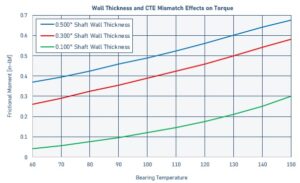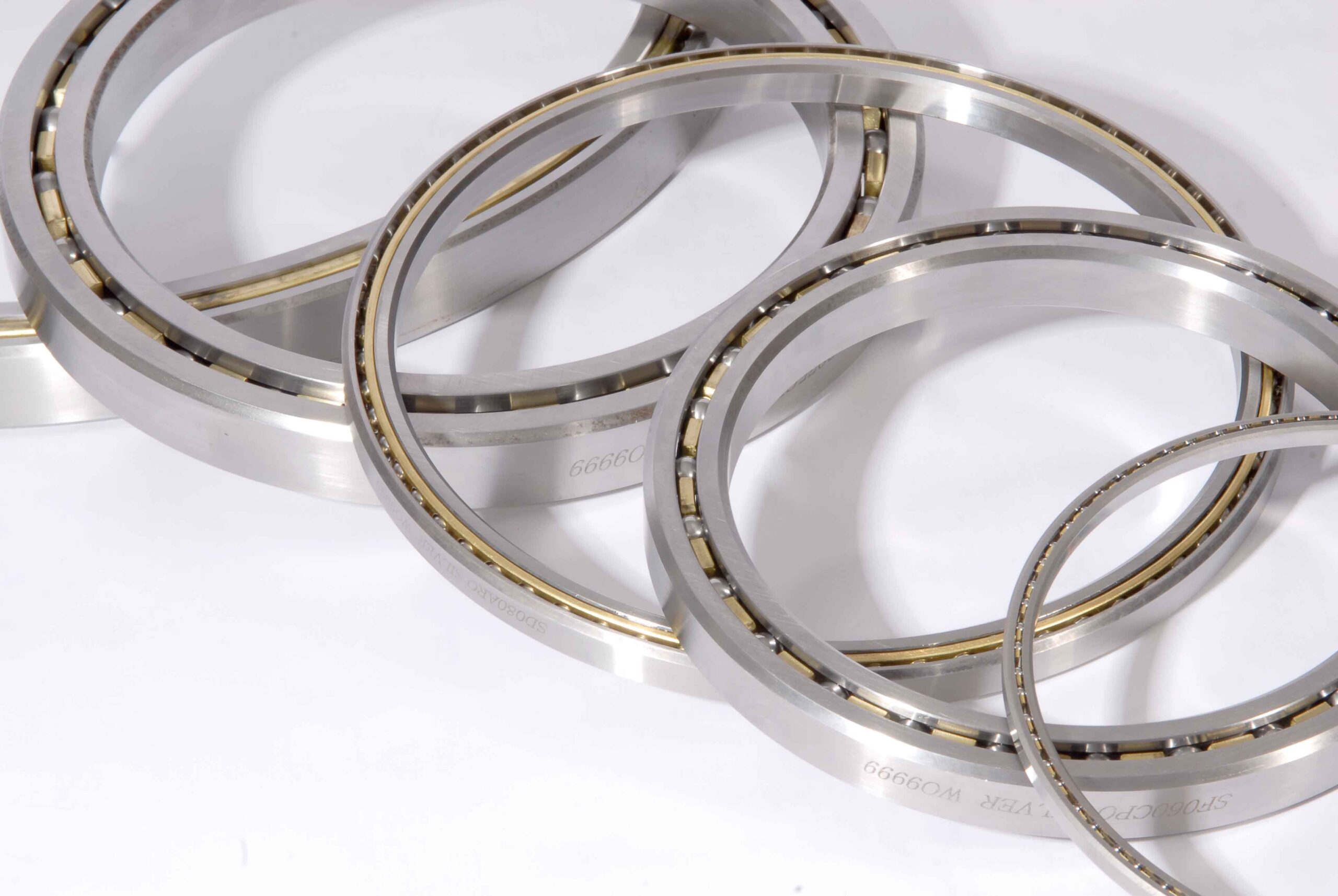Thermal Expansion
Operating Temperature Range and Mating Components
Temperature Range for the bearings and their mating components becomes very significant, especially if that range is more than just a few degrees and materials with dissimilar Coefficients of Thermal Expansion (CTE) are used (often referred to as a ‘CTE Mismatch’). The greater the difference between Bearing CTE and Shaft and Housing CTE, the more potentially detrimental the impact of Shaft and Housing effect on Bearing Preload and Torque. The table below shows CTE examples of common Bearing, Shaft and Housing Materials. Steel Bearings and Aluminum mating components can result in some of the most significant impact to the Bearing, especially at larger diameters:
Steel |
6.4 x 10-6 |
Aluminum |
12.4 x 10-6 |
Si3N4 |
1.8 x 10-6 |
ZrO2 |
5.7 x 10-6 |
17-4PH SS |
6.0 x 10-6 |
440C SS |
5.6 x 10-6 |
300 SS |
9.6 x 10-6 |
The formula for growth or shrinkage of a dimension due to temperature changes is as follows:
∆ Dimension=(T1-T2 )×Nominal Dimension × CTE
The larger the dimension, the larger the resultant growth or shrinkage of that dimension due to temperature changes. Larger bearings will experience greater changes than smaller bearings. Additionally, T1 is often the ambient temperature of the environment at assembly of the bearing into the application. This temperature is often controlled to 68°F (20°C). T2 is often the Operating Temperature condition, typically evaluated at the extreme cold and/or extreme hot conditions of the Operating Temperature Range.
The impact of Shaft and Housing Wall Thickness becomes more significant as:
- CTE Mismatch becomes larger
- Operating Temperature Ranges becomes more larger
This is because the thinner the wall thickness, the less the effect of the shaft expanding the inner ring and the housing compressing the outer ring, resulting in reduced clearance and possible increased preload. Increase in preload will result in an increase in Bearing Torque.


